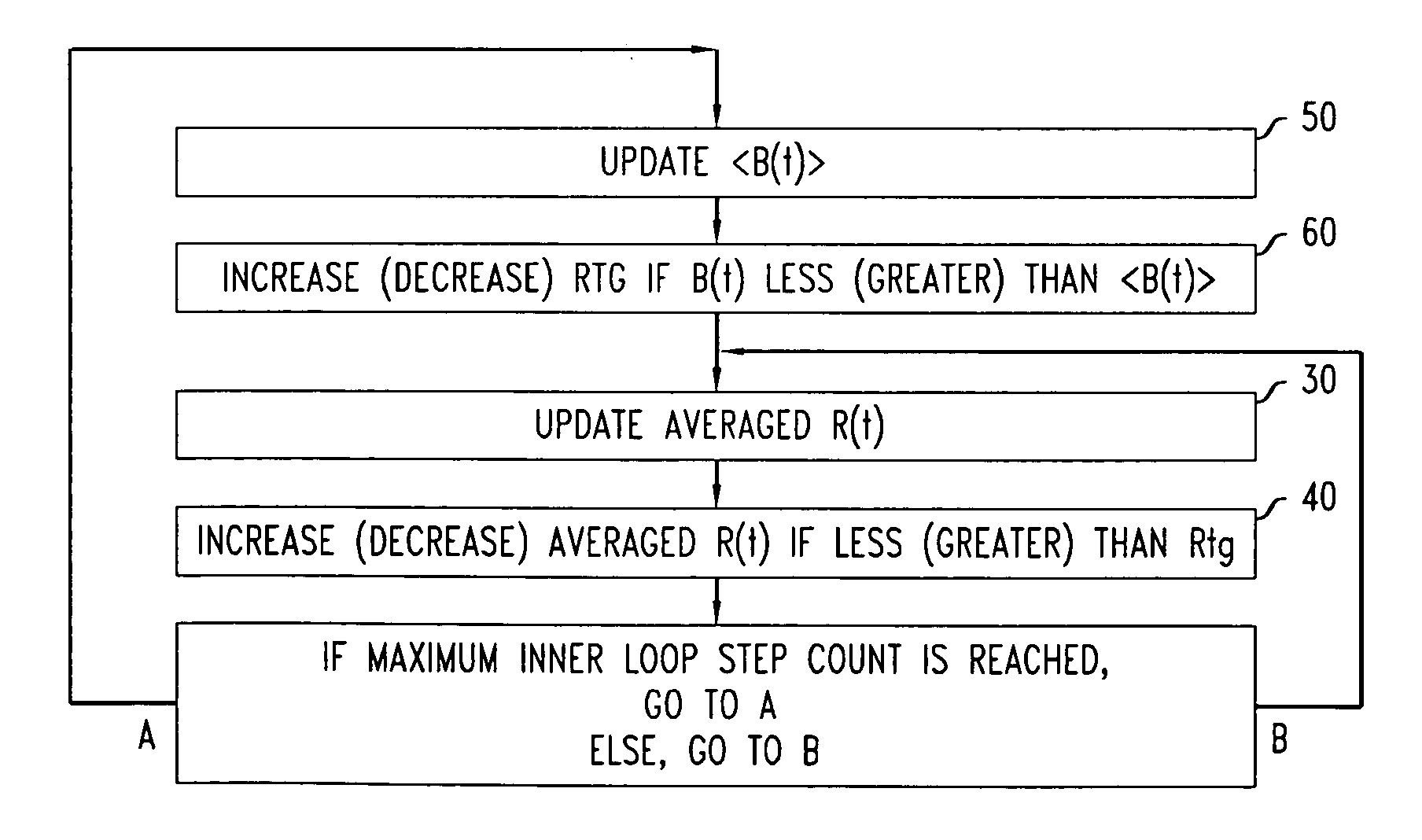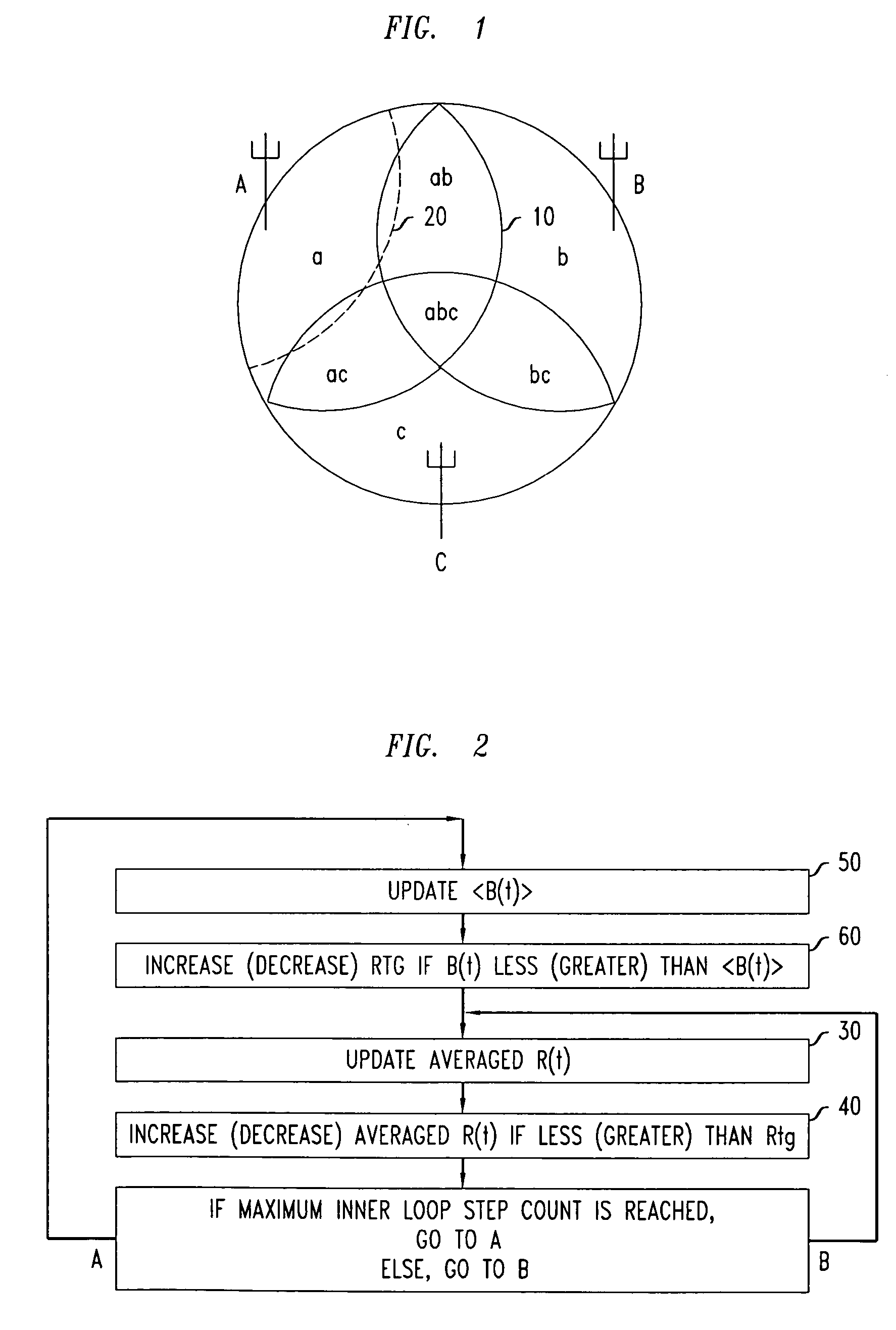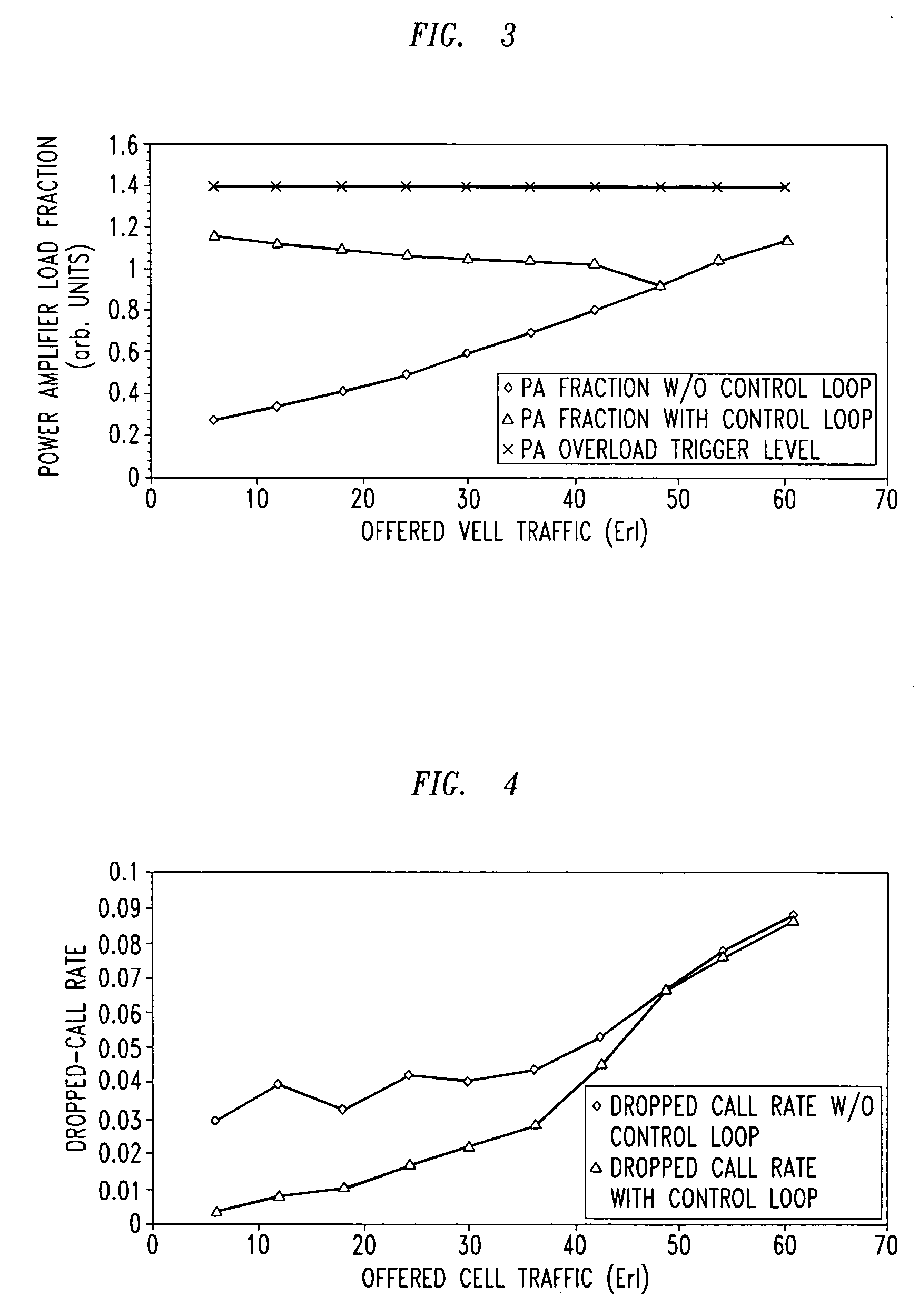Method of configuring a cell of a wireless communication system for improved resource utilization
a wireless communication system and cell technology, applied in the field of cell configuration in wireless communication system, can solve the problems of resource demand fluctuation, limit the maximum traffic load that a base station can handle, and resource demand may fluctuate over tim
- Summary
- Abstract
- Description
- Claims
- Application Information
AI Technical Summary
Benefits of technology
Problems solved by technology
Method used
Image
Examples
example 1
[0061] Downlink power, but not antenna tilt, is adjusted. We assume that the downlink gain can be made to follow fluctuations in R(t) as rapidly as necessary, and that B(t) can be estimated from R(t) in predictive fashion. This makes it possible to set Rtg to a fixed value, as will be seen below.
[0062] Suppose that R(t) measures the number of trunk-equivalent properties utilized by the cell, such as channel elements, frequencies, or packet pipes. Then the probability for B(t), representing the rate at which access is blocked, can be derived from R(t) through a stochastic model, b:
Pr(B(t))=b(R(t)).
Rtg can be derived from the inverse function of b through:
Rtg=b−1(Bmax).
[0063] As a result, the long term average of the access blocking rate B(t) will remain at or below Bmax if the downlink gain controller succeeds in maintaining R(t) at or below Rtg. An algorithm for that purpose can be implemented in the following fashion:
[0064] If (R(t)
[0065] Otherwise G(t...
example 2
[0067] Downlink power, but not antenna tilt, is adjusted.
[0068] We drop the assumption that the response time of the gain control is short enough to allow for effectively instantaneous responses to changes in R(t). Moreover, we allow for the possibility that the amplitude of fluctuations in R(t) may change in an unpredictable fashion over time. We here describe a gain control algorithm, to be used under such less idealized conditions, for maintaining the long-term expectation value at or below Bmax. Rtg is now a function Rtg(t) of time.
[0069] The algorithm has two embedded loops: an inner loop and an outer loop. The inner loop adjusts the downlink gain to follow the time-dependent target value Rtg(t). This inner loop can be implemented as a proportional / integral control.
[0070] As shown in FIG. 2, R(t) is averaged at block 30 with some time constant, and adjusted toward Rtg(t) at block 40.
[0071] The outer loop measures B(t) and sets the target Rtg(t) so that the expectation valu...
example 3
[0075] This is a specific implementation of Example 2, in which R(t) represents the downlink PA power. The quantity R(t) can already be a time-averaged quantity with averaging time T0. This averaging time could, for instance, be set slightly below the inner-loop power control response time (0.667 msec for UMTS, 1.25 ms for 3G1x). In that case, power fluctuations caused by power control would still be captured, whereas faster fluctuations, due, e.g., to baseband code combining, would have been filtered out.
[0076] Rmax represents the upper bound the PA has been rated for with respect to fluctuations over time scales of T0. B(t) can measure an excess of R(t) over Rmax (referred to here as “overswing”) and Bmax can represent the margin within which B(t) is to be maintained over the long term. (Thus, R(t), Rtg(t), and Rmax may all be defined with respect to at least one property of an aggregate downlink transmit power level, which in this example may be a time-averaged power level.)
[00...
PUM
 Login to View More
Login to View More Abstract
Description
Claims
Application Information
 Login to View More
Login to View More - R&D
- Intellectual Property
- Life Sciences
- Materials
- Tech Scout
- Unparalleled Data Quality
- Higher Quality Content
- 60% Fewer Hallucinations
Browse by: Latest US Patents, China's latest patents, Technical Efficacy Thesaurus, Application Domain, Technology Topic, Popular Technical Reports.
© 2025 PatSnap. All rights reserved.Legal|Privacy policy|Modern Slavery Act Transparency Statement|Sitemap|About US| Contact US: help@patsnap.com



